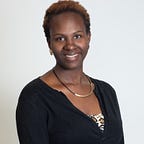Raising Multiracial Children as a Millennial
Embarking on a new decade doesn’t change the way our country looks at race. In states that sometimes seem more divided than united, race relations show up in major ways from immigration policies to how underrepresented groups are portrayed in the media. Through it all, I remain committed to teaching my children to love and celebrate all parts of who they are and to seek guidance from the stories of their ancestors.
My daughter’s tan skin and curly hair, which is often braided to protect her ends from damage is a symbol of her Blackness. My son’s almond eyes indicative of his indigenous Mexican roots. Their home life an infusion of Filipino recipes and Jewish humor. Luckily, all aspects of their racial identities are represented in my household, but outside these walls, I know that they are likely to experience the world much differently.
I choose to take a positive stance, but it hasn’t always been easy. I remember walking my daughter through a New York City park right before the chill of winter. She couldn’t have been more than a couple of months old, as I pushed her around in her stroller, relieved to finally be getting some fresh air after being cooped up in our one bedroom apartment. However, instead of being greeted by people saying, “Congratulations” or commenting on how cute my newborn was, people blatantly asked, “Are you her nanny?” This was my first experience as a mom in 21st century America, which made me worry for the future of my child. Would she be asked if she was adopted all her life and overhear gossip about who her “real” mother is? Would she be called names or labeled “not Black enough?” This moment did not come as a shock, but served as a reminder of the significant role that race plays in my daily life. In that moment, I realized that these are the painful experiences that come with parenting multiracial children.
My daughter was born in 2012 and I am a bonafide 80s baby, which makes me a millennial mother. Regardless of becoming a parent 78 years after my great-grandmother, I don’t feel too far removed from the “one drop rule” that prevailed during her lifetime. As a child, I overheard other kids categorizing each other all the time. They would say, “Look at that light-skinned girl over there acting like she’s White,” or “ You have nappy hair so you’re Black.” Clearly this is learned behavior, but I think it’s safe to say that this generation is now looking at race slightly differently.
One of my former colleagues, a kindergarten teacher had her students do an activity where they created self-portraits and generated a class list of words to describe their skin colors: cinammon, chocolate, buttery, the color of a strong tree. In addition to teaching my own children to describe their skin color positively, I want them to feel empowered to confront racial roadblocks.Their acts of truth and defiance against racial binaries will hopefully be representative of their lived experience- a life where they are not pressured to choose between the racial categories next to a checkbox, but proud of the fact that who they are is inclusive of all parts of their culture.
Sociologists predict that in the next 30 years, 1 in 5 people born will have mixed-race identities. To put this in context, “the number of multiracial Americans is growing three times as fast as the population as a whole” based on data from the Pew Research Center. That being said, it is about time that we move beyond the generalizations used to define race and expectations that one person can speak to the experiences of an entire group of people.
As proud as I am to be Black, I want my children to recognize that our identities don’t have to be identical for them to find strength and power in who they are and yet “the majority of Americans with a mixed racial background — 61 percent, according to a 2015 Pew survey — don’t identify as multiracial at all.” Because of the boxes that society has historically and consistently forced people in, 50% of mixed race people identify as the race they most closely resemble. My children look Black, my daughter even attends an Afrocentric school, but that doesn’t mean that they are any less Pacific Islander, Latina/o, or White. How devastating would it be as a mother if your child’s chosen identiy ignored your very existence. I couldn’t imagine that fate and it still breaks my heart when I recall my daughter asking me if I was her real mother. I tried to hold back my tears when I asked what prompted her question. She innocently responded, “Because you’re so dark, Mommy and I’m so light.” This became a teachable moment for me as a parent, but that didn’t make it any less painful.
Society can have a negative effective on how we relate to one another and it is important to slowly undo the damage for my children’s sake. While this is a daunting task, which some may even call overly ambitious or downright impossible, it is my job. Our children are never going to come out exactly how we imagined them to be and even when we teach them about their history and take the time to celebrate Chanukah, Christmas, and Kwanzaa, we cannot determine how they will navigate the world. But what we can do is remind them that they are beautiful, teach them that they are the descendants of greatness (on all sides), and be there to love them, hold them, and listen, despite what the world throws their way.
